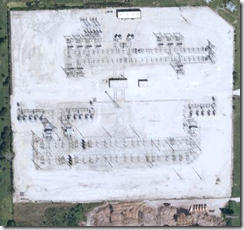The site selection process is one of the top ways to influence your ability to run a green data center. Power generation composition defines your carbon footprint. The site environmental condition defines your choice of cooling systems. Mike Manos adds his opinion on this topic.
So you might be thinking, ‘Great, I just need to find the areas that have cheap power and a good Carbon Emission Factor right?’ The answer is no. Many Site Selection processes that I see emerging in the generic space start and stop right at this line. I would however advocate that one takes the next logical step which is to look at the relationship of these factors together and over a long period of time.
But, what most people miss focusing on these technical details is the network you choose when you start down the process. One of the insider data center discussions I have had is how people don't understand the vendor networks that exist. Almost every vendor has a network of people who they work with as preferred vendors. The relationships are not always transparent and can have referral fees for diverting new business. Customers may think they get around the requirement for competitive bidding requirements, but the bidding may not be as competitive as you think as many vendors cannot get into a bid if they don't have an established relationship with the group controlling the bid process.
The ones to be most suspicious of are the ones who make repeatedly claims of being objective and independent. It is analogous to someone who says "trust me." But it sounds like "don't trust me" to me.
How do you get out of this mess, as the data center owner you need to be in control of your own destiny and open your eyes to complexity of the relationships.
Also, following others can make your life easier as someone with more resources has run a more thorough analysis. Mike Manos discusses how others are following Microsoft to Chicago.
We have seen many examples like Quincy, Washington and San Antonio, Texas where the site selection process has led to many Data Center providers locating in the same area to benefit from this type of analysis (even if not directly exposed to the criteria). There is a story (that I don’t know if its true or not) that in the early days when a new burger chain was looking to expand where it would place its restaurants, it used the footprint of its main competitor as its guide. The thinking was that they probably had a very scientific method for that selection and they would receive that same ancillary benefit without the cost and effort. Again, not sure if that is true or not, but its definitely something likely to happen in our industry.
In many markets these types of selections are in high demand. Ascent Corporation out of St. Louis is in the process of building a modern facility just down the street from the Microsoft Mega-Facility near Chicago. While Ascent was a part of the original Microsoft effort to build at that location, there has been an uptick in interest for being close to that facility for the same reasons as I have outlined here. The result is their CH2 facility is literally a stones throw from the Microsoft Behemoth. The reasons? Proximity to power, fiber, and improved water infrastructure are already there in abundance. The facility even boasts container capabilities just like its neighbor. The Elmhurst Electrical Substation sits directly across the highway from the facility with the first set of transmission poles within easy striking distance.
The Generation mix of that area has a large nuclear component which has little to no carbon impact, and generates long term stability in terms of power cost fluctuations. According to Phil Horstmann, President of Ascent, their is tremendous interest in the site and one of the key draws is the proximity of its nearby neighbor. In the words of one potential tenant ‘Its like the decision to go to IBM in the 80s. Its hard to argue against a location where Microsoft or Google has placed one of its facilities.’
This essentially dictates that there will be increasing demand on areas where this analysis is done or has been perceived to be done. This is especially true where co-location and hosting providers can align their interests with those commercial locations where there is market demand. While those that follow first movers will definitely benefit from these decisions (especially those without dedicated facility requirements), first movers continue to have significant advantage if they can get this process correct.
But, as Mike points out you rarely get as good a deal as those who are the first movers.
While those that follow first movers will definitely benefit from these decisions (especially those without dedicated facility requirements), first movers continue to have significant advantage if they can get this process correct.
